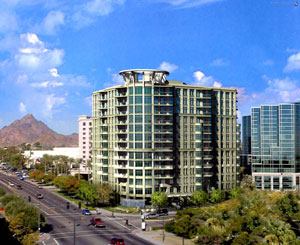Mesa, located just north of this submarket, has been the hardest-hit multifamily sector. Though well-established, Mesa struggles with little new infrastructure and commercial construction. Rent for an average 804-square-foot unit is $622. Vacancies for North Mesa are as high as 17.39 percent, although the average for the entire city is 10.8 percent. Sale prices in Mesa decreased from an average $52,400 per unit in 2002 to $38,400 in 2003.
On a more positive note, no area of greater Phoenix is suffering from overbuilding. During the last decade, approximately 8,000 new units went up annually; for the first three quarters of 2003, only 2,600 were permitted.
Construction slowed in response to the radical decrease in absorption (6,200 units were absorbed in 2000, compared with 642 units in the first three quarters of 2003).
As the economy weakened, and especially after interest rates went into a downward slide after Sept. 11, 2001, people who could afford to buy a home did, causing vacancy rates to escalate to levels not seen in years. In 2002, newly constructed apartment complexes in Phoenix offered as much as four months of free rent to obtain sufficient leasing activity. As a result, many builders stopped building, while others postponed projects in the pipeline. Though the cost of Phoenix land remains reasonable, most builders are expected to enter new multifamily projects tentatively, as absorption increases gradually over the next three or four years.
Learning to Fly So, the balance of the Phoenix multifamily market is steady, and the outlook is good. The economy is on the rise, buyer interest is high, and, similar to the rest of the nation, Phoenix will soon benefit from a return of the renter pool as rising interest rates make it harder to purchase a home.
Even the small increases in interest rates since mid-summer 2003 created an almost instantaneous softening in the local new home market. From September 2002 to September 2003, the average home price in Phoenix increased from $145,000 to $160,000. Fixed mortgage rates are expected to rise to about 6.5 percent by year-end, bringing sales of new and existing homes down 4.6 percent nationally. An equal decline is projected for the Phoenix market. This can only strengthen local occupancy rates and allow Phoenix to deliver the coveted cash flow investors have come here for.
–Julie Vaughn is vice president at Sperry Van Ness in Phoenix.
